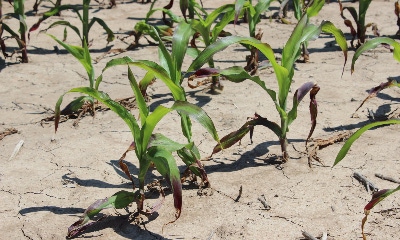June 21, 2016

Fallow syndrome got the name from cropping systems in the dry plains states where they routinely benefited from the additional soil moisture available after the previous year had been summer fallowed.

POPS OF PURPLE: Phosphorus deficient Corn plants – a typical symptom associated with corn grown following fallow.
Fallow Syndrome is a result of population reduction of a particular fungus (vesicular arbuscular mycorrhizae or VAM) due to no plants growing in that field the previous year. The mycorrhizal fungi has a symbiotic relationship with corn and small grains. The mycorrhizae develop around the corn roots and assist the root in taking up nutrients, primarily phosphorus and zinc. The mycorrhizae benefit by accessing the sugars from the root system of the host plant. As plants grow out of the phosphorus deficient symptoms they have remained pale and stunted in the most impacted fields.
Most agricultural crops have mycorrhizae, and so do most weeds, but not all benefit equally from the symbiosis, and not all are equally as good of a host. For instance, Brassica crops are not a host. Corn happens to be particularly dependent on mycorrhizae.
Luce is the University of Missouri Extension corn specialist. Contact him at [email protected].
You May Also Like




